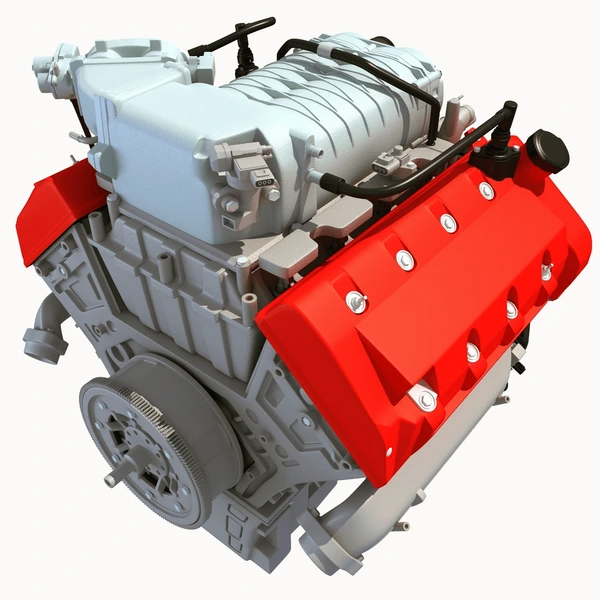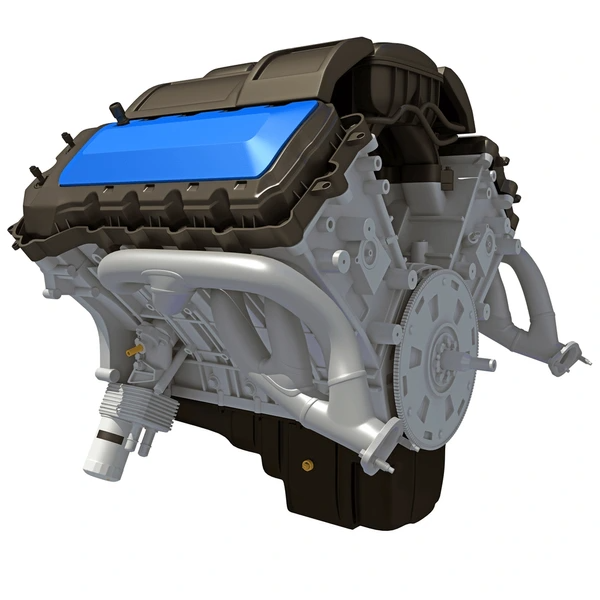
Introduction to the L83 Engine
The L83 engine, part of General Motors’ Gen V Small Block family, delivers impressive power in a 5.3L package. Found in various GM trucks and SUVs, it replaced the older Vortec engines. Also known as the EcoTec3, the L83 features direct injection, Variable Valve Timing (VVT), and high compression to enhance performance and fuel efficiency.
The engine uses a durable aluminum block and incorporates active fuel management. This system deactivates half of the cylinders when full power isn’t needed, optimizing fuel efficiency. Truck enthusiasts favor the L83 for its ideal blend of power and efficiency.
For high-performance applications, the L83 has undergone modifications. The 2022 GMC Syclone, for example, uses a 750-horsepower supercharged version. These modifications, such as a blueprinted aluminum block and custom fuel systems, showcase the engine’s versatility and potential for tuning.

Key Specifications and Features of the L83 Engine
Displacement and Configuration: The 5.3-liter V8 engine features eight cylinders arranged in a V configuration. This setup strikes a perfect balance between power and efficiency, making it a popular choice for various GM vehicles.
Material and Construction: The engine uses an aluminum block, which helps reduce weight and improve performance. Forged internals, like a twisted steel crankshaft, H-beam rods, and aluminum pistons, enhance durability and strength.
Performance: Known for its impressive capabilities, the engine produces 750 horsepower and 600 lb-ft of torque. This output results from enhancements like custom cylinder heads, a high-flow fuel system, and a centrifugal supercharger.
Transmission: The engine pairs with an 8-speed automatic transmission, part of the Hydra-Matic family. This setup efficiently manages the power and delivers smooth performance.
Fuel System and Exhaust: A high-flow fuel system and stainless-steel exhaust contribute to the engine’s performance. Some variants also feature an air-to-water intercooler system to keep the charge air cool, further boosting efficiency.
Performance of the L83 Engine in GM Trucks
- Base Performance: The L83 engine is designed to provide a balance of power and efficiency. It features direct injection and variable valve timing, which contribute to its performance capabilities. The engine produces significant horsepower and torque, making it suitable for both everyday driving and towing applications.
- Performance Upgrades: Several aftermarket options are available to further enhance the L83 engine’s performance. For instance, companies like Texas Speed and Performance offer stage 1 and stage 3 packages that focus on improving power output, throttle response, and overall engine airflow. These upgrades can result in a substantial horsepower gain, with stage 3 packages offering an aggressive 85-95 horsepower increase.
- Component Swaps: Some enthusiasts opt for component swaps to boost performance. For example, swapping the intake manifold and throttle body from an L86 (6.2L) engine to an L83 (5.3L) engine can enhance airflow and power output. This modification is popular among those looking to maximize the potential of their L83 engine.
- Oil Recommendations: Proper lubrication is crucial for maintaining the performance and longevity of the L83 engine, especially when modifications like supercharging are involved. It is recommended to use high-quality engine oil that can handle the increased stress and heat generated by performance upgrades.
L83 Engine vs L86: Comparing the Two V8 Engines
Displacement and Basic Specifications:
The 5.3-liter engine has a displacement of 325 cubic inches, while the 6.2-liter engine offers 376 cubic inches of displacement. This difference contributes to variations in power and torque output between the two engines.

Power and Torque Output:
The 5.3-liter engine generates 355 horsepower and 383 lb-ft of torque. On the other hand, the 6.2-liter engine produces 420 horsepower and 460 lb-ft of torque, offering more robust performance.
Fuel Injection and Management:
Both engines feature direct fuel injection to improve fuel efficiency and performance. However, the 6.2-liter engine also includes GM’s Active Fuel Management (AFM) system, which deactivates four cylinders to save fuel during light-load conditions.
Materials and Construction:
Both engines feature cast aluminum engine blocks and cylinder heads for reduced weight and improved durability. The 6.2-liter engine has a larger bore and stroke, increasing its displacement and power output.
Performance Features:
The 6.2-liter engine includes a two-stage oil pump and an oil-jet piston cooling system, improving lubrication and cooling. Additionally, the longer intake manifold runners optimize airflow for better performance.
Fuel Management Systems:
The 6.2-liter engine is equipped with GM’s Dynamic Fuel Management (DFM) system. This system alternates between 17 firing orders to optimize fuel efficiency. The 5.3-liter engine uses AFM to save fuel under light-load conditions but lacks DFM.
Applications:
The 5.3-liter engine is ideal for lighter-duty applications, such as full-size pickup trucks and SUVs. In contrast, the 6.2-liter engine is typically used in heavier-duty applications, including large SUVs and full-size pickup trucks.
Fuel Efficiency and Efficiency Gains with the L83 Engine
Fuel Efficiency Overview
The 5.3-liter engine features Dynamic Fuel Management (DFM), which alternates between 17 firing orders to save fuel. It runs in two-cylinder mode when full power isn’t needed. This technology adjusts fuel usage based on driving conditions, improving overall efficiency.
Fuel Efficiency Gains
Using premium fuel, like 91 octane, can impact fuel efficiency. While higher octane fuel doesn’t offer a huge boost, avoiding lower octane fuel helps maintain engine performance and efficiency. Additionally, the engine’s camshaft-driven fuel pump and high-efficiency intake manifold further contribute to fuel savings.
Comparative Efficiency
The fuel efficiency of this engine is competitive with both diesel and gasoline engines. The reduced weight of its components, like the gas turbine-generator, lowers overall vehicle weight, enhancing fuel consumption.
Potential for Improvement
While the 5.3-liter engine offers solid fuel efficiency, there’s still room for improvement. Turbocharging systems have shown potential for up to 6% better fuel economy at high speeds. However, this improvement can be limited by boost constraints and imperfect sizing.
Common Issues and Maintenance for the L83 Engine
Common Problems
One common issue with the 5.3L engine is the formation of oil sludge. This can cause noise and other mechanical problems, often linked to design flaws or manufacturing defects. Additionally, some owners report inconsistent component quality, leading to issues with lifters, camshafts, and other parts. Reliability concerns have also been raised, with users citing oil sludge and other mechanical problems.
Maintenance Requirements
To prevent oil sludge buildup, regular oil changes are essential. Always use high-quality oil that meets the manufacturer’s specifications. It’s also important to monitor the engine’s design, especially lifters and camshafts, for any signs of wear or damage. Regular diagnostic checks can identify potential issues early, helping to avoid costly repairs later on.
Performance Enhancements
Many enthusiasts choose to upgrade their engines with performance parts, such as superchargers, custom cylinder heads, and high-flow fuel systems. These modifications can significantly boost power output and improve overall performance.
To get detailed scientific explanations of L83 Engine, try Patsnap Eureka.

